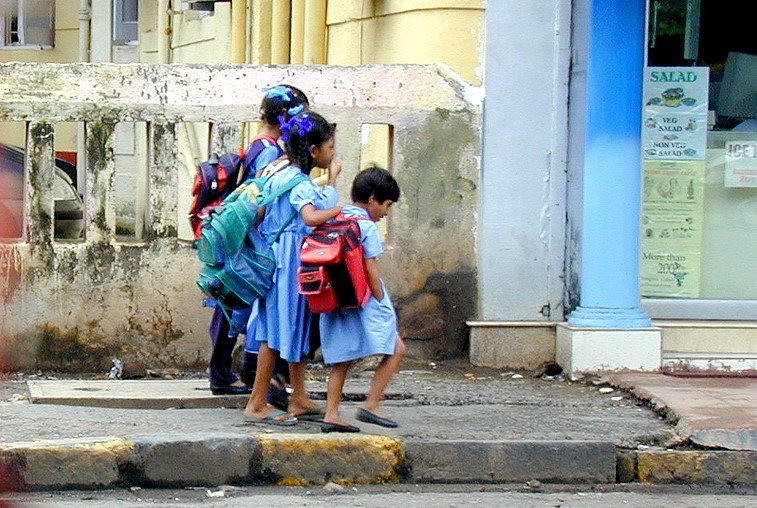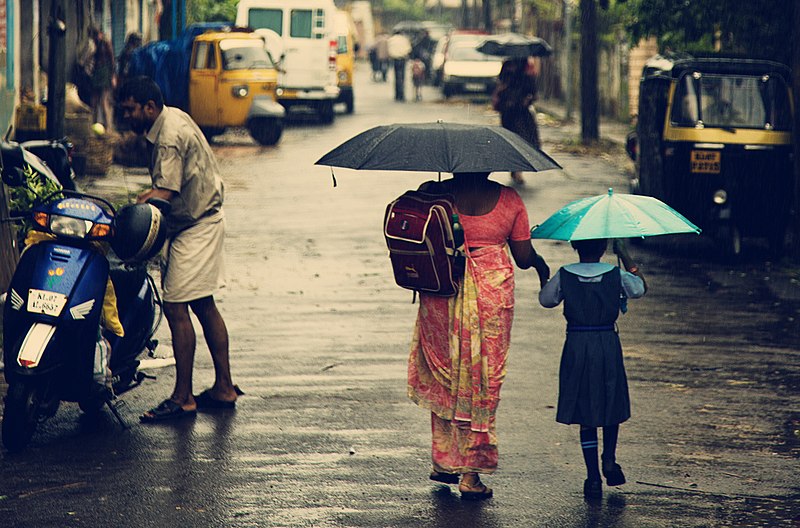NEP 2019: In final draft, a central regulator for school boards and uncertainty over RTE
Shreya Roy Chowdhury | October 29, 2019 | 09:31 AM IST | 8 mins read

NEW DELHI: Nearly five months after the Draft New Education Policy was made public for comments, the final version is ready.
At 55 pages, the final draft of the National Education Policy 2019 is a pared-down version of the May-2019 one that ran to over 480 pages. It also has fewer prescriptions for the various agencies, regulators and branches of government involved. All the detailed descriptions of puzzles, classroom activities and designs of certificates have been edited out.
There are some other changes too. The new document is far less emphatic about the extension of the RTE Act to cover both early childhood care and education (from age three) and secondary education till Class 12, than its first iteration. Its stand on mid-day meals and further amendments to the Act, has similarly weakened. The new version says nothing about “loosening the input restrictions” in the Act, or the minimum required infrastructure for a school, but vaguely promises a review. The rather radical concept of “modular board examinations” – an exam could be taken any time over Classes 9-12 – has given way to the more sedate plan of allowing students two tries.
The May version had dwelt at length on the possibility of introducing still more untrained youths to public schools. This version is far more restrained, mentioning volunteer teachers only for foundational literacy.
The Rashtriya Shiksha Aayog (National Education Commission) will still replace the Central Advisory Body on Education but, as many publications have already reported, the Education Minister will chair it instead of the Prime Minister. This should somewhat allay the fears of centralisation that states have expressed but the new document appears to have also introduced a national-level body to regulate all the existing school boards, including the public state boards.
The NEP - a draft till it is cleared by the Union Cabinet and Parliament - will likely be tabled in the winter session.
Given below are some of the most significant measures it recommends for school education.
Early Childhood Care and Education: The policy recommends government investment in the care and education of children under six years of age. Its primary direction was to have the National Council of Educational Research and Training, the apex advisory body on curriculum, develop a “curricular and pedagogical framework” for this. The NCERT has already checked that box, having submitted its ECCE framework in August.
Mid-day meals: The final draft has retained the May draft’s emphasis on extending the Mid-Day Meal Scheme to also include breakfast. It has, however, dropped the suggested menu of “some milk and a banana”. Moreover, the meals find mention in the section on “foundational literacy” only and the Draft’s suggestion of extending it all the way to Class 12 has, apparently, been dropped. So has the Draft’s insistence on the food being locally-sourced and the allotment for it being “linked to food inflation”.
Controlling drop-out rates, Special Education Zones: The policy recommends two broad measures to prevent children dropping out. The first measure is the overall improvement of infrastructure, upgrading of existing schools to include higher classes, construction or hostels and the introduction of transport to ferry students, especially girls. The Right to Education Act 2009 mandates a primary school in every habitation. The policy envisages large “school complexes” to which children may have to travel.
The second measure is the “tracking” of children and their learning, whether they are enrolled and attending school and intervening with remedial measures when required. Counsellors will be available too. The “free and compulsory aspect” of the RTE Act will be “examined for extension” through Class 12, says the policy. Its previous version had almost confirmed an extension.
Equity and inclusion are addressed separately in the document which broadly recommends setting up Special Education Zones where historically marginalised groups such as the Scheduled Castes and Tribes, women, Muslims, transgender people and the differently-abled are least represented in education. It also proposes a new “Gender-Inclusion Fund”, more research and sensitisation but undermines its own stand by including the possibility of “open schooling” for these groups.
 School during the rain (Credit: Wikimedia Commons)
School during the rain (Credit: Wikimedia Commons)
Restructuring the curriculum: For several decades, school education has been split up into segments – classes one to five (primary), six to eight (upper primary), nine-10 (secondary) and Classes 11 and 12 (senior or higher secondary). The transition from each segment to the next generally represents a jump in the standard of the content along with changes in teaching strategies. The policy proposes a rejig – a “5+3+3+4” structure with three years to eight years, eight-11, 11-14 and 14-18 as the corresponding age brackets. The curricular framework and teaching strategies will be altered accordingly. Children will move through stages of play or activity-based learning to more formal systems. The policy proposes an “art integrated and sport integrated education”.
Reduced curriculum and choice: The policy says that curriculum content will be pared down “to its core essentials”. What will be privileged instead is discussion, discovery and analysis. For secondary school, it proposes an incredibly resource-intensive system of giving students “flexibility and choice” of subjects so that they may “design their own paths of study and life plans”.
Teachers: While the document says the teaching vacancies must be filled “as soon as possible” it also encourages schools to rely on “trained volunteers” and “one-on-one peer tutoring” to teach children to read. The May Draft had recommended the institution of a “Remedial Instructional Aides Programme” with paid staff – akin to the Shiksha Mitra system of Uttar Pradesh – and a “National Tutors Programme”. The new one has dispensed with the details but retained the idea of a community of volunteers to support the teachers.
To train full-fledged teachers, it has recommended that teacher training programmes be eventually moved to multi-disciplinary institutions. By 2030, the minimum degree will be an integrated four-year B.Ed degree that will combine an undergraduate liberal arts and a B.Ed degrees.
In places where there is a shortage of teachers, a large number of scholarships will be offered to encourage talented youths to join and special incentives will be provided to those who agree to go to these places, including housing. A “planning exercise” will be undertaken to assess the requirement of teachers for the next two decades. Promotion and salary increases will be “merit-based”.
Finally, in line with all the other revisions, the National Curriculum Framework for Teacher Education 2009 will be revised by 2021.
Language: The policy goes with the Right to Education Act’s provision on elementary education in the mother-tongue and envisages “major effort” on the part of Centre and states to provide teachers in sufficient numbers for it. It suggests states enter into “bilateral agreements” to hire teachers from each other. The three-language formula will be retained but with “a great flexibility” and “no language will be imposed on any state”. The last is an acknowledgement of the protests that had engulfed Tamil Nadu after the draft was released in May. The draft had originally proposed mandatory Hindi-learning for students in non-Hindi-speaking states. That was hurriedly dropped after the protests began. Sanskrit will be offered at all levels of school and higher education and other classical languages (Tamil, Telugu, Kannada, Malayalam, Odia, Pali, Persian and Prakrit) will be “widely available”. The policy proposes using “gamification and apps” for language teaching.
Textbooks: Curricular reform will lead to a new National Curriculum Framework and new textbooks. In addition to the highly-subsidised books provided by NCERTs and the state-level, SCERTs, the policy allows “additional textbook materials” to be procured through “public-private partnerships and crowd sourcing”.
Assessment and board exams: Board exams for higher classes are set be become “easier” as they will test “core capacities” and can be taken twice in a year. The policy also proposes a “regulatory body” at the national level “for regulating assessment and evaluation norms and standards”. So far, the Centre has had no control over any board except the Central Board of Secondary Education. State boards have all functioned autonomously and been regulated by state governments.
College admissions: The board exams will also be de-linked from college entrance procedures. That will be taken over by the National Testing Agency which will conduct tests for admission into higher education institutions and “enable most universities to use these common entrance exams – rather than having 100s of universities each devising their own exams – thereby drastically reducing the burden on students, universities and colleges”.
Clubs and circles: The policy promises support for students displaying talents in any field outside the traditional academics with “topic-centred and project-based clubs and circles”. Performance in such activities and Olympiads can become “part of the criteria for admissions” into the undergraduate programmes of even premier institutions such as the Indian Institutes of Technology (IITs) and National Institutes of Technology (NITs).
Resources, Governance, Regulation: Smaller schools within five to 10 miles of each other will be organised into a “school complex”, led by the senior secondary school in that area. This, the policy argues, will allow more efficient use of resources, including teachers, counsellors, libraries and equipment for sports and other activities. States will get till 2025 to “group or rationalise schools”. The RTE Act “will be reviewed and appropriate modifications made to enable this policy”. The purview of the Act may be extended to cover early childhood education from age three at one end, to Classes 11 and 12 at the other.
The functions of the top-most state body in charge of running and regulating its school system, the Department of Education, will be divided over three bodies. The department will continue to be the apex, policy-framing body but the actual running of the schools will be handled by a “directorate of school education” and the system regulated by a “state school regulatory authority”. The new document proposes deregulation of private school education, “emphasising online and offline disclosure and transparency” in places of laws and regulations, and regulating free public schools and fee-charging private schools by the same criteria, benchmarks and processes”. As part of that, it insists that along with the number of teachers, subjects taught and fees, schools must also disclose “student outcomes on standardised evaluations”.
Also read: NEP 2019: Large, liberal, deregulated universities in final draft
Follow us for the latest education news on colleges and universities, admission, courses, exams, research, education policies, study abroad and more..
To get in touch, write to us at news@careers360.com.